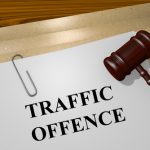The Offence of Jaywalking in New South Wales

Ever wondered when and where you are permitted to cross a public road in New South Wales?
Or what might happen if you cross the road unlawfully?
Well here’s an summary of the main rules:
- You can only start crossing a road at a pedestrian light if the ‘man’ is green,
- You can only start crossing a road at traffic lights (where there are no pedestrian lights) if the lights are green or flashing yellow,
- You are allowed to cross a road if you are more than 20 metres away from lights,
- You must get to the other side of the road in a timely manner, and
- You must not cause a hazard or obstruction to drivers, riders or pedestrians.
And here are the laws which flesh out those rules.
Crossing a road at pedestrian lights
Regulation 231 of the NSW Road Rules 2014 says you can only start crossing at pedestrian lights (eg the red or green man) if the light is green.
If the light turns red, or flashing red, while you are already on the road, you must “not stay on the road for longer than necessary”.
The fine for disobeying this rule is currently $75, or a maximum of $2,200 if you choose to fight the case in court and lose.
Crossing a road at traffic lights
Regulation 232 says you can only start crossing the road at traffic lights – where there are no pedestrian lights – if the traffic lights are green or flashing yellow, or there is no red light showing.
If the traffic lights turn red or yellow while you are already on the road, you must not stay on the road for longer than necessary.
Crossing the road when the traffic light is red or yellow comes with a fine of $75, or up to $2,200 if you challenge the case in court and are unsuccessful.
Crossing the road on or near a crossing
Regulation 234 makes it an offence to cross a road within 20 metres of a crossing (eg 20 metres of where there are traffic or pedestrian lights) unless you are:
(a) crossing, or helping another pedestrian to cross, an area of the road between tram tracks and the far left side of the road to get on, or after getting off, a tram or public bus, or
(b) crossing to or from a safety zone, or
(c) crossing at an intersection with traffic lights and a pedestrians may cross diagonally sign, or
(d) crossing in a shared zone, or
(e) crossing a road, or a part of a road, from which vehicles are excluded, either permanently or temporarily.
If you are more than 20 metres from a crossing, you must not stay on the road longer than necessary.
Again, the offence comes with a fine of $75, or up to $2,200 if contested in court.
Causing a hazard or obstruction
Regulation 236 makes it an offence to “cause a traffic hazard by moving into the path of a driver’ or “unreasonably obstruct[ing] the path or any driver or another pedestrian”.
The penalties are the same as the previous offences.
If you have been charged with a traffic offence and are going to court, contact Sydney Criminal Lawyers anytime to arrange a free first conference with an experienced traffic lawyer at one of our many locations across Sydney, in Wollongong or Newcastle, or over the phone.
Going to court for a traffic offence?
If you are going to court for a traffic offence, call or email Sydney Criminal Lawyers anytime to arrange a free first consultation with an experienced, specialist traffic lawyer who will accurately advise you of your options, the best way forward, and fight for the optimal outcome in your specific situation.






